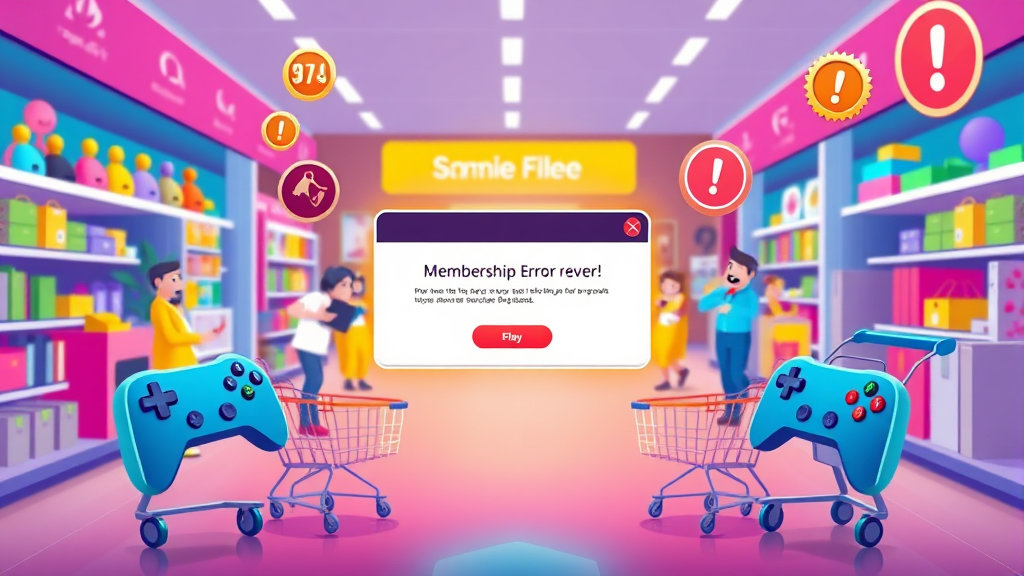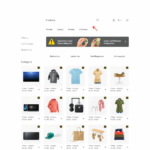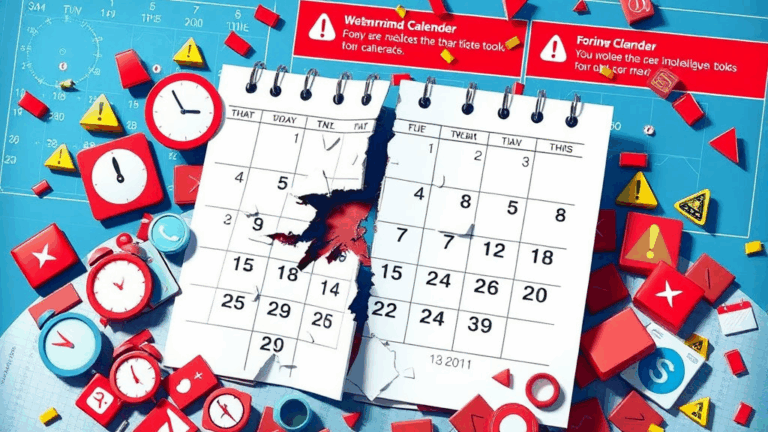Fixing Loyalty Program Glitches in Gamified Shopping Platforms
Reward Points Not Posting After Certain Actions
If your loyalty system’s gamified quests are triggering correctly but users aren’t getting points, especially after non-purchase actions like reviews or social shares, check whether you’re relying on front-end events. I had one setup where we used a JS tracker hooked to button clicks tied into our Spring Boot backend, and guess what — ad blockers with aggressive script filtering ate half our metrics. Users absolutely did rate products. We just didn’t count it.
Avoid relying solely on client events for high-value flows. Log data server-side when the action completes, and reconcile jobs nightly. Social shares are also messy — X closed their APIs tighter than a jar of expired kimchi, and Facebook open graphs sometimes silently fail.
“If users can complete an action that rewards them points, use at least two signals: front-end tracking plus server-verifiable event ingestion.”
Also, if you see differences between your admin dashboard tallies and user-facing totals, triple-check rounding behavior. One platform we integrated did 1.9999 → 1 display-side but actually stored 2. That cascaded into messed up tier unlocks downstream.
Tier Thresholds Misfiring After Redemption Events
I once spent four incredibly stupid hours trying to figure out why users who spent all their points dropped out of Platinum tier the next day. Turns out, the logic for tier assignment was written like:
if (points_total >= 10000) {
tier = "Platinum"
}simple and dumb. Redeeming rewards shouldn’t nuke your tier — but because both points and tier status were stored in the same ledger (!!!), every deduction recalculated status. If your system isn’t using a separate cumulative lifetime points tracker, you’re gonna bleed angry emails during coupon drops.
Fix was a table restructure: one ledger for earned points (increment only), one for balance (increments and decrements). Tiering keyed off the former. Also added a debug tool to manually override tiering if someone still glitched out due to a race condition. Because of course that happened.
Inconsistent Badge Unlocks on Mobile vs Desktop
This one was boggling until I logged user-agent strings during reward unlocks. Users on Safari mobile never got the “Weekend Warrior” achievement, even though their event trail showed repeat logins during the right window. Why? Because our front-end cookie was set with a 12-hour expiration by default, and Safari’s dodgy ITP (Intelligent Tracking Prevention) was clearing first-party cookies not attached to real user actions.
We solved it by switching to localStorage for daily login event flags and confirming server timestamps on session cookie creation. Also extended the badge detector logic to query backend sessions, not just cookie pings, to validate daily activity streaks.
I still don’t trust Safari timing windows or anything that arrived post-High Sierra.
Gamification Loops Breaking During Promotion Overlaps
Biggest headache? You guessed it: logic collisions during promo weeks. When we had a scheduled double-points week AND a concurrent badge competition, they stacked unintentionally — and some users racked up 4x points because the points hook was called twice: once by the promo middleware, once inside the badge award workflow (which reused the same method under the hood).
Some things I do now as a rule whenever stacking promos:
- Prefix triggered events with context-specific scopes (like
promo::points::earnvsbadge::points::earn) - Log all reward events with a short TTL Redis key — if the same user receives reward X within 500ms, defer one
- If tiers are mutable within gamification weeks, freeze them in Redis and compute overrides nightly
- Force cooldown periods between similar activities (like newsletter signup and product share, both firing retroactively on OAuth)
- Log all promo-triggered points separately so we can retroactively back them out (or re-award, happens more often)
Don’t assume different components won’t reuse the same callback under load.
Delayed Reward Emails Tied to Job Queue Lag
I had this ticket come up where three users in the same shipping zone got their reward confirmation emails 48 minutes, 7 minutes, and 9 hours late. None of the timestamps made sense. We were using a queued job system (Laravel’s built-in queue driver at the time), and everything seemed fine in Horizon. Digging into memory shows the queue worker restarted halfway through — bumped by a server update cronjob — but the retry logic wasn’t idempotent because the email flag was tied to reward.claimed_at == null, so it didn’t fire again.
“We assumed job retries would rerun the full logic chain. They didn’t. They skipped claimed rewards due to truthy state.”
We started using explicit job IDs with deduplication markers so we could track unique email deliveries. Also split transactional emails into a separate queue fed by SQS rather than the default Redis instance (which was choking on badge award jobs).
Misaligned Currency in Multi-Country Loyalty Rollouts
When we soft-launched the loyalty features in EU countries, we tied point conversion to the local currency using the wrong assumption: we multiplied the purchase amount (e.g., €100) by our points rate (say, 10%), expecting to get 10 points. But the backend still treated numbers as USD. So users earning “10 points” in Germany actually earned points worth ~$11.40 when redeemed against the US-catalogue. No one complained, hilariously — until we added tiers, and German users started unlocking Platinum within three purchases.
The euro/dollar mistake wasn’t visible because it only mattered at redemption time. And because everything looked fine “per transaction,” no one tracked the cumulative effect. Fixing it involved introducing a “currency factor” that normalized points to a common store value presentation. But redemption logic had to be messy and country-specific. I still think we missed some legacy refunds.
Leaderboard Pagination Losing State on Scroll
Bizarre one: users loading the gamified leaderboard page would scroll halfway down (infinite scroll style), then refresh, and land back at the top — but some would drop 5–10 ranks. We thought it was a caching issue, or maybe Redis inconsistency. Turned out our pagination was based on user position offset rather than stable rank order.
So if users below you gained points while you were idling, you’d fall — not just visually, but in the backend’s in-memory cache of rank:offset mappings. One guy even noticed he could snipe rank #9 by bouncing in and out of the reward zone ladder via high-value checkouts during lull periods.
We ended up anchoring rankings to a stable daily snapshot and used a diff tracker for relative changes — so UI showed ± movement instead of bouncing ranks live. A/B tests showed people liked certainty more than raw real-time drama.
Weird Login Behavior with Gamified OAuth Routines
If your loyalty program triggers achievements on account linking (e.g. “First time logging in with Google” badge) — beware: OAuth consistency across devices is hot garbage. One user linked Apple ID on mobile, then logged in with Google on desktop, and boom — two accounts, both accruing points. Because each identity provider returned its own email with privacy relayers (thanks, Apple), there was no overlap. We only caught it because his name and shipping address were copy-paste identical between two 7-point reward entries.
We now force email verification prompts after OAuth login if the email doesn’t match any known account. Also started hashing browser fingerprints to catch silent dupes — imperfect, but caught ~40 potential mislinks in the first month alone.
Side note: Google One Tap auto-login bypassed the badge flow entirely until we added an explicit hook for google_auto_prompt origin calls. Undocumented, naturally.
Archived Actions Triggering Loyalty Events via Webhooks
We had a Zapier integration firing actions off Stripe purchases. One day, someone re-imported historical purchases into Stripe (they were cleaning up test data), unknowingly re-triggering loyalty rewards for archived webhooks. Our app had no check to see if the payment was real-time or historical. Yep — 300 old transactions, 300 new point awards. Had to roll those back manually.
The webhook didn’t include create timestamps — just status: paid — so we had to start checking the Stripe event latency compared to add-to-cart timestamp in our own DB. If the diff was more than 10 seconds, we now assume it’s historical and discard the reward logic unless it explicitly includes a force_sync param from admin console.














